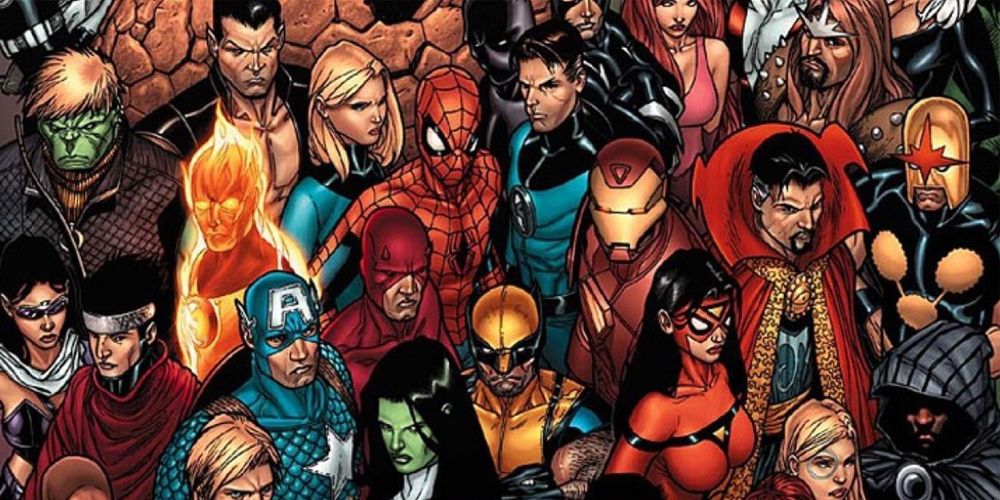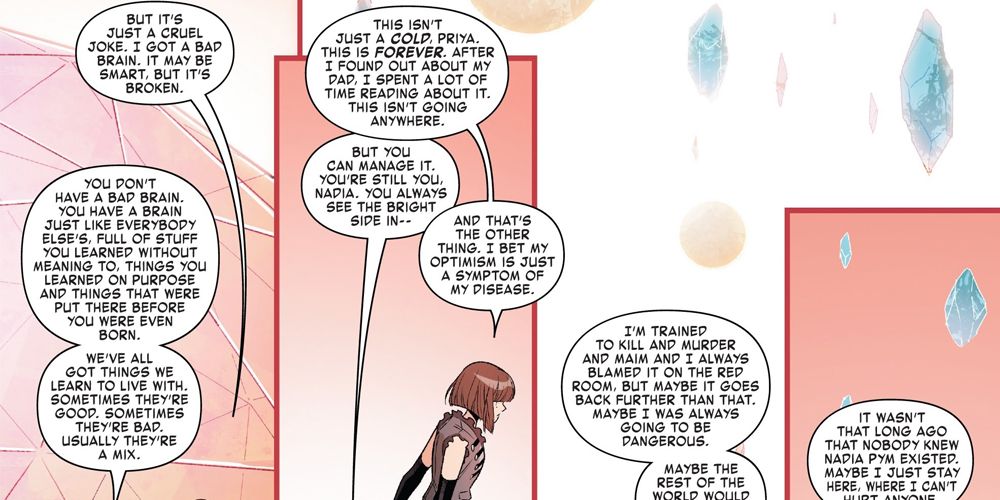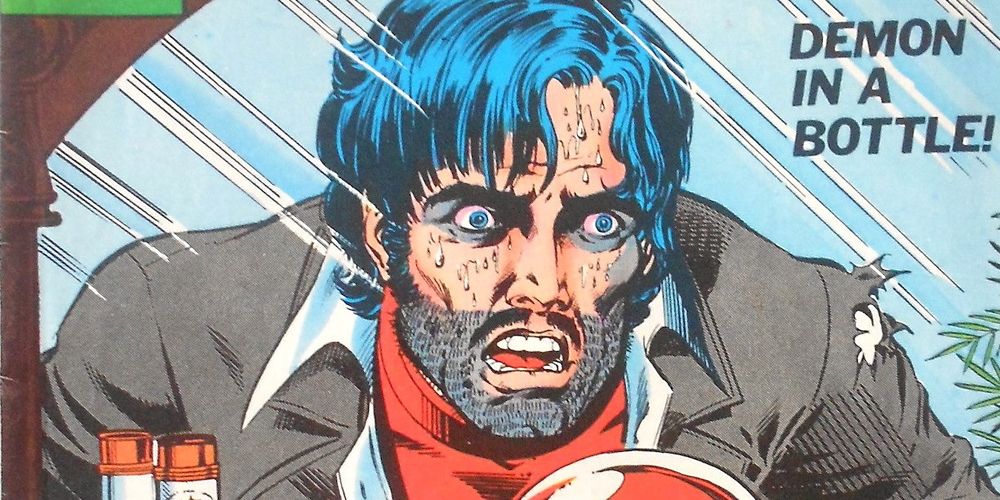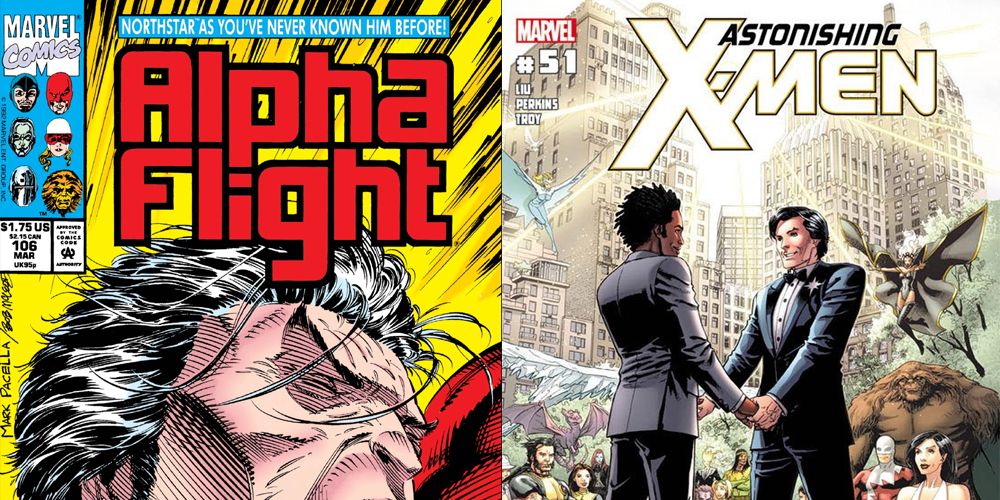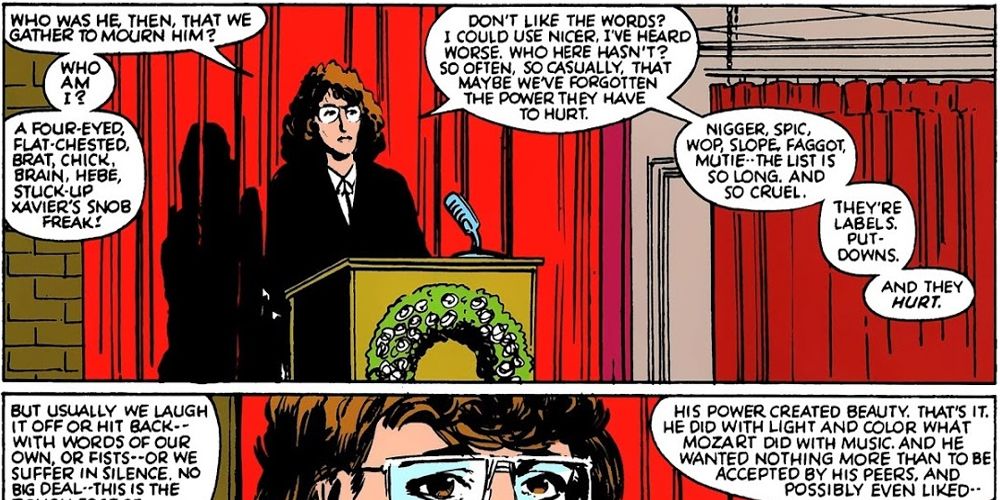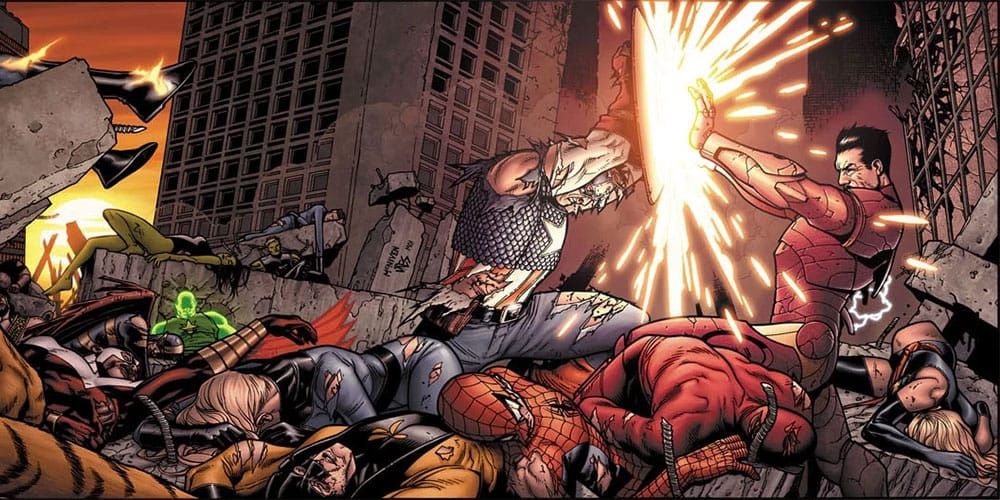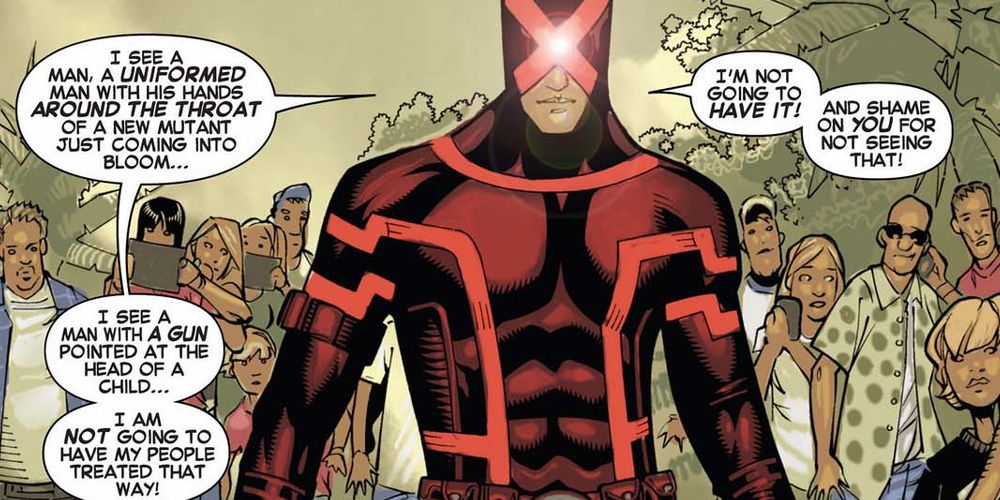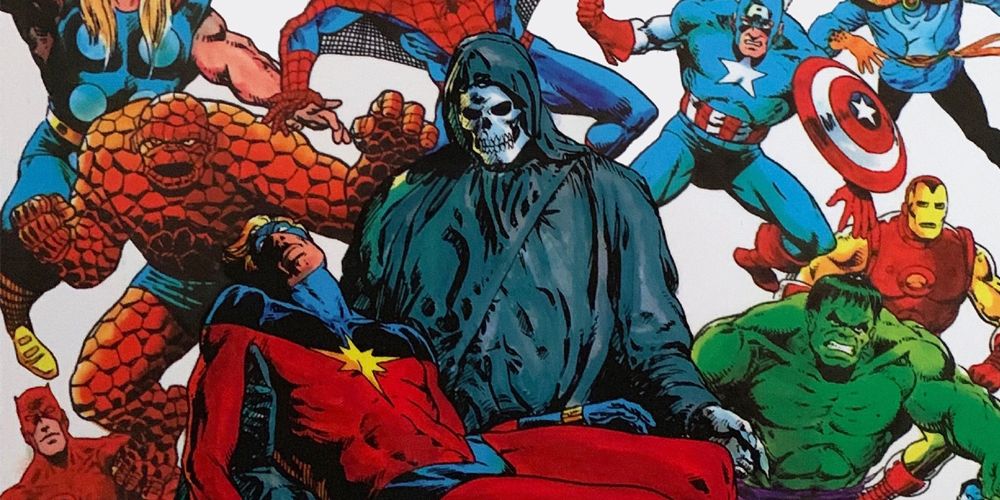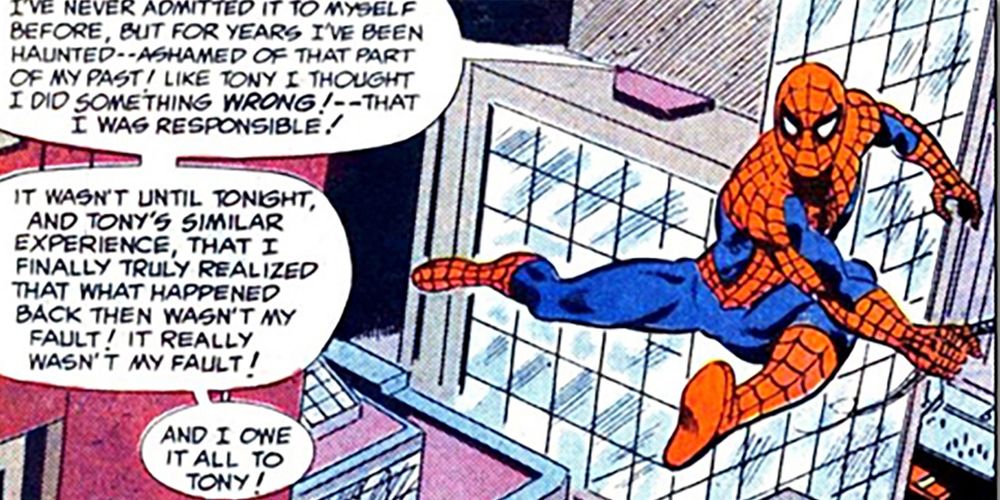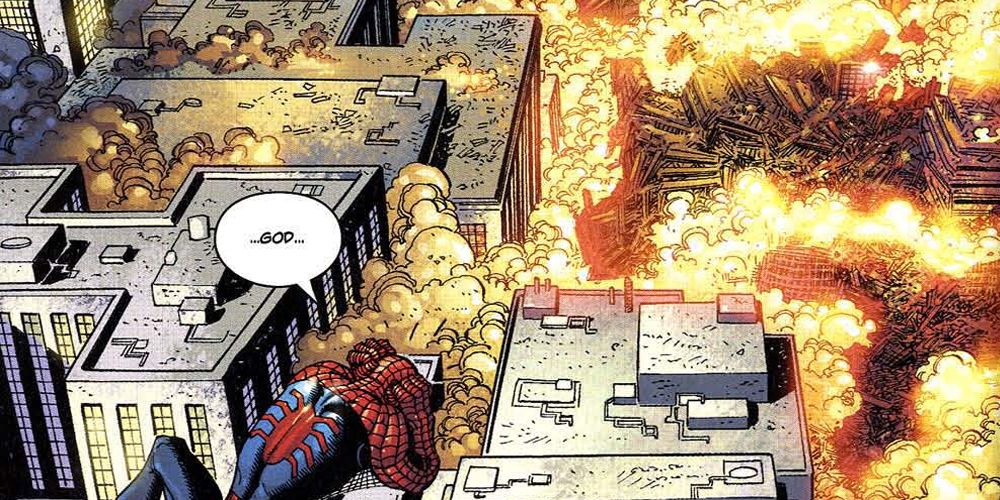Ever since Stan Lee’s birth of characters such as the Fantastic Four, Marvel Comics has been a leader in taking real-life issues and applying them to characters and story arcs – particularly with the X-Men, who represented minorities who were discriminated against, whether for their sexuality, skin color, religion, beliefs, or appearance.
From Captain America punching out Hitler to 9/11, there are plenty of storylines to choose from, but here are the best Marvel storylines which inject doses of reality-based events and situations, making the stories – regardless of time and location – still relevant. (NOTE: There are spoilers in the descriptions.)
10 THE UNSTOPPABLE WASP #4 & 5
While mental illness has been represented in comics before – mostly on the villain side – it rarely has been represented in the hero side of the equation. In early 2019, Jeremy Whitley reveals the titular character, Nadia van Dyne – like her father, Hank Pym – has Bipolar Disorder. In the aftermath of a defeat, Nadia tries to fix everything that went wrong, as she goes into a manic episode. By the end of issue #5, her friend and mother-like figure Janet van Dyne talks with her about what it is to live with the disorder, making this a brave, honest, touching story.
9 IRON MAN #128
Even those who seemingly have everything can fall into the trap of alcoholism. In this 1968 issue entitled “Demon in a Bottle,” which ends the story arc beginning with issue #120, Tony Stark is revealed to be an alcoholic. The topic was rightfully spread throughout several issues, but this issue particularly deals with the aftermath of Tony’s drinking problem as he loses his stocks in his company and must maintain control over Stark Industries. Until this story, Stark was somewhat of a secondary character, and while the film made Iron Man popular, this humanized him.
8 ALPHA FLIGHT #106 & ASTONISHING X-MEN #51
For the longest time in mainstream comics, homosexuality has been absent in terms of having a presence in a major character. That is, until 1992 when Northstar, a member of Marvel’s Canadian super-team, Alpha Flight, revealed he is gay. However, that is not the only noteworthy aspect to this touching and heartwrenching issue. Northstar also adopts a baby whom has AIDS and his outing of himself was so more awareness may be drawn to AIDS and a cure.
Fast forward to 2012 and Marvel’s first same-sex marriage between Northstar and his boyfriend, Kyle Jinadu, happens in Astonishing X-Men #51. This issue came three years before the U.S. Supreme Court struck down all state bans on same-sex marriage, helping pave the way for the LGBT movement.
7 NEW MUTANTS #45
Sadly, countless kids have committed suicide as a result of bullying. In this 1986 issue of New Mutants, Larry Bodine is a teenager who faces bullying when he’s suspected of being a mutant. Although he is befriended by Kitty Pryde and Wolfsbane, Larry goes through the many stages of trying to cope with being a mutant – from evading it, to deflecting, and to insulting. When bullies threaten Larry by outing him as a mutant, he takes his own life. The ending is a sad realization that’s been often tragically, inevitably realized through the years, but Marvel’s take helped spread the message to many.
6 CIVIL WAR
In the aftermath of 9/11, after President Bush’s infamous “you’re either with us or with the terrorists” speech, Mark Millar wrote one of the biggest event books in Marvel history. After heroes inadvertently cause a huge tragedy, which results in the death of hundreds of innocents, the U.S. government chooses to pass the Superhuman Registration Act, a law that gives those with superpowers the choice to either agree to register with the government or retire – a comic book allegory of both the Civil War and the aftermath of 9/11, specifically the passing of the Patriot Act and the resulting sacrifice of certain civil liberties.
5 UNCANNY X-MEN #3
Since 1963, the X-Men have been an allegory for civil rights. Characters Professor X and Magneto represent Martin Luther King Jr. and Malcolm X, respectively, and their different approaches to racial equality. However, in 2013, after once-straight-laced Scott “Cyclops” Summers has enough of how mutants are treated, he decides to lead a mutant revolution, taking a cue from former enemy Magneto. His revolutionary-bordering-on-terroristic acts bring his X-Men under the attention of the Avengers. When the Avengers go to confront Summers and his team, Summers gets to the heart of the matter regarding racial profiling (seen here as mutant profiling), revealing discrimination is sadly not a thing of the past, but is still alive today.
4 DEATH OF CAPTAIN MARVEL
Legendary writer/artist Jim Starlin lost his father to cancer and it deeply affected him so much that, in 1982, he pitched the idea of killing off a major Marvel character … permanently. In this special graphic novel, after years of exposure to Compound 13 nerve gas, Captain Marvel gets inoperable cancer. The story has heroes desperately trying to save Marvel’s life, as he comes face to face with Death; but ultimately, this story is more about acceptance in the face of defeat and failure; mortality; and facing the end of one’s life with peace and dignity.
3 SPIDER-MAN AND POWER PACK #1
Most think of comics as kids stuff, but even in 1984, writers weren’t shying away from heavy topics such as child molestation. In this special issue, a little boy is being molested by his babysitter, and we find out Peter Parker himself was once molested by a friend. Through his conversation with the boy, Spider-Man convinces the boy to talk to his parents about what happened. The issue isn’t so much about getting justice but rather speaking up and saying something when something’s wrong. The end even has a page dedicated to how to report child sexual abuse and seeking treatment.
2 AMAZING SPIDER-MAN #36
Unlike DC Comics, which has cities like Gotham and Metropolis, Marvel takes place a majority of the time in New York City. So when September 11, 2001, changed the world, it’s no surprise it would also deeply affect the heroes (and villains) of the Marvel universe. Published on December 1, 2001, this issue – and its wonderful art by John Romita Jr. – captures both the horror and heroism of that day. The issue captures the entire roller coaster of emotions felt that day, from guilt, blame and vengeance to resilience, courage and compassion.
1 CHAMPIONS #24
Considered a very young Avengers team, the Champions faced one of the most serious issues in this story where Miles Morales’ high school classmates fall victim to a school shooting. No one stops it and there is no magical, Hollywood-type absolution to the story. The emotional weight is ever-present and told in panels ranging from the active shooter drill scene to the realistic dialogue about feeling helpless. It’s one of the best moments in contemporary Marvel publishing as each character ponders what good they can do in a world where people are complacent.

